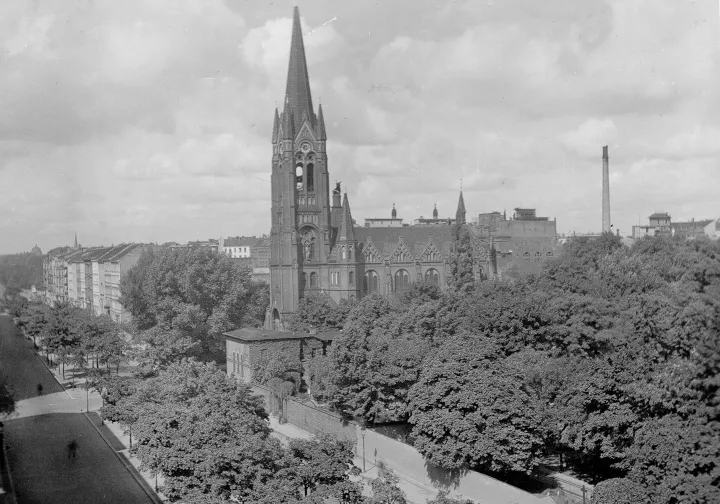Prehistory: The largest cemetery for the poor in Berlin
In 1831, a graveyard for the poor was established in front of Landsberger Tor. Initially, victims of cholera were buried here in simple wooden coffins. From 1840 onwards, all people who are so poor that the Berlin administration pays their burial costs find their final resting place in the graveyard. In 1881, the graveyard for the poor is closed. An area of the approximately 32,000 square kilometers of land is reserved for a new church.








